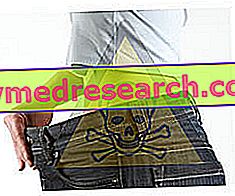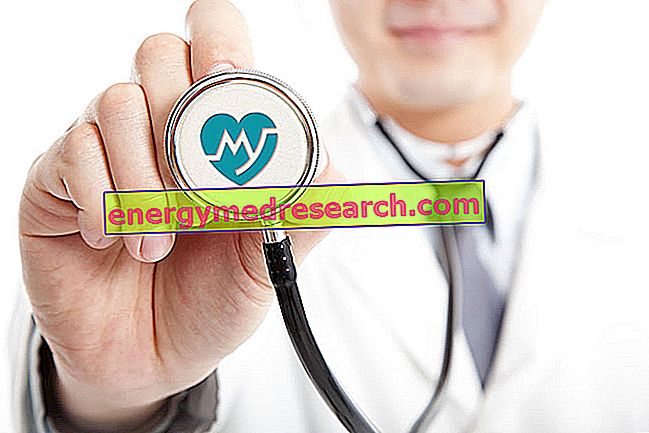BIXON ® is a bisodic drug based on Ceftriaxone
THERAPEUTIC GROUP: General antimicrobials for systemic use - Cephalosporins
IndicationsAction mechanismStudies and clinical effectiveness Usage and dosage instructionsWarnings Pregnancy and lactationInteractionsContraindicationsUndesirable effects
Indications BIXON ® Ceftriaxone
BIXON ® is reserved for the treatment of serious bacterial infections sustained by Gram negative microorganisms generally resistant to common antibiotic therapies.
The efficacy of BIXON ® has also been demonstrated in the treatment of surgical site infections and opportunistic infections in immunosuppressed and debilitated patients.
Mechanism of action BIXON ® Ceftriaxone
Ceftriaxone, active ingredient of BIXON ®, is a beta lactam antibiotic belonging to the third generation cephalosporin category.
Compared to its predecessors, this active principle has proved to be both experimentally and clinically more effective, carrying out its therapeutic action also against generally resistant microorganisms such as Klebsiella, Proteus and Neisserie.
The particular efficacy of action, essentially linked to the ability to inhibit the transpeptidation reaction of the peptidoglycan, compromising the stability of the cell wall, is strengthened by the chemical-physical characteristics, which give Ceftriaxone a natural resistance to beta-lactamases, expressed by various microorganisms as a form of resistance to antibiotic therapy.
Despite the aforementioned characteristics, this active principle does not present an effective intestinal absorption pattern, thus forcing the patient to take BIXON ® necessarily by parenteral route.
Following intramuscular or intravenous intake, Ceftriaxone is evenly distributed among the body's various tissues and biological fluids, crossing the blood-brain barrier and thus also reaching the central nervous system, where it is able to carry out a therapeutic action even during meningitis.
After performing its therapeutic action for several hours, Ceftriaxone is still eliminated in an active form through the urine.
Studies carried out and clinical efficacy
1. CEFTRIAXONE IN THE THERAPY OF SURGICAL SITE INFECTIONS
Antimicrob Agents Chemother. 2009 Oct; 53 (10): 4305-10. Epub 2009 Aug 10.
Surgical site infections from Enterococcus faecalis are very frequent and often responsible for a significant lengthening of the hospital patient's hospitalization time. In these cases the association between ampicillin and ceftriaxone has been shown to be effective and very well tolerated.
2 . CEFTRIAXONE AND CESAREO CUTTING
J Matern Fetal Neonatal Med. 2008 Sep; 21 (9): 638-42.
Interesting study showing that taking ceftriaxone is as effective as triple antibiotic therapy in preventing infectious complications following a caesarean section.
3. EMOLITIC ANEMIA CEFTRIAXONE INDOTTA
J Am Med Dir Assoc. 2008 Oct; 9 (8): 610-1.
Case report denouncing the onset of haemolytic anemia following administration of ceftriaxone in a geriatric patient, requiring multiple blood transfusions. These studies emphasize the importance of medical supervision throughout the treatment.
Method of use and dosage
BIXON ®
Powder and solvent for solution for injection of 1 g of ceftriaxone for 3.5 ml of solution.
The numerous clinical trials conducted on the efficacy of ceftriaxone in the treatment of infectious diseases have shown that the dose of a daily gram taken in single administration is generally effective in controlling most infections.
However, the definition of the correct dosing schedule should be defined by the physician after carefully evaluating the patient's state of health and the severity of his clinical picture.
Particular caution should be reserved for elderly patients suffering from liver and kidney diseases.
In order to avoid the onset of recurrence, it would be appropriate to prolong the intake of BIXON ® up to 48 hours after the disappearance of the clinical symptoms.
Warnings BIXON ® Ceftriaxone
The use of BIXON ® should be under strict medical supervision given the potential side effects of ceftriaxone therapy.
Before administering the drug, the doctor should carefully assess the patient's state of health, the possible presence of conditions incompatible with cephalosporin-based antibiotic therapy, and the sensitivity of the organism responsible for ceftriaxone disease.
Your doctor should carefully evaluate the benefit-risk balance resulting from the administration of BIXON ® in patients with kidney and liver disease or with a history of drug allergy.
Inadequate use of this antibiotic could facilitate the emergence of therapy-resistant strains, making the elimination of the pathogen particularly complex.
It would also be useful to consider the effects of antibiotic therapy on intestinal microflora, responsible for profound alterations capable of increasing gastro-intestinal side effects on the one hand, and reducing the absorption of active ingredients on the other, as in the case of oral contraceptives, therefore it would be advisable to use contraceptive methods of coverage.
PREGNANCY AND BREASTFEEDING
The use of BIXON ® during pregnancy and in the subsequent period of breastfeeding should only take place in cases of real need and under the close supervision of a specialist doctor, given the absence of studies able to characterize the safety profile of the Ceftriaxone for fetal health.
Interactions
In order to avoid the formation of precipitates that could seriously compromise the patient's state of health, it would be advisable to avoid reconstituting the ceftriaxone microcrystals with calcium-containing diluent solutions.
It has also been shown that the intake, even non-simultaneous, of ceftriaxone and aminoglycosides can significantly increase the microbicidal action of the drug.
Contraindications BIXON ® Ceftriaxone
The use of BIXON ® is contraindicated in patients who are hypersensitive to penicillins and cephalosporins or their excipients, premature babies, full-term infants up to the 28th day of age, patients suffering from jaundice or pathologies characterized by hyperbilirubinemia.
The presence of lidocaine in the solvent intended for intramuscular use extends the aforementioned contraindications even to patients hypersensitive to lidocaine.
Undesirable effects - Side effects
The use of Ceftriaxone parenterally could be associated with the appearance of different side effects, both systemic and local.
Nausea, vomiting, diarrhea and widespread abdominal pain, exanthema, hives and dermatitis, headache and dizziness, leukopenia, thrombocytosis, anemia, hypertransaminasemia and hyperbilirubinemia represent the most frequently observed, but fortunately transient, side effects.
Different studies and a careful post-marketing assessment have also shown that taking ceftriaxone may increase the risk of urolithiasis and biliary lithiasis in predisposed patients.
Clinically relevant are also the allergic reactions to the active ingredient, characterized by bronchospasm, laryngospasm, hypotension and in more serious cases also anaphylactic shock.
Prolonged and unjustified use of BIXON ® could compromise the intestinal microflora, facilitating intestinal colonization with Clostridium Difficile, the etiological agent of pseudomembranous colitis.
Note
BIXON ® is a prescription drug that is mandatory ..



